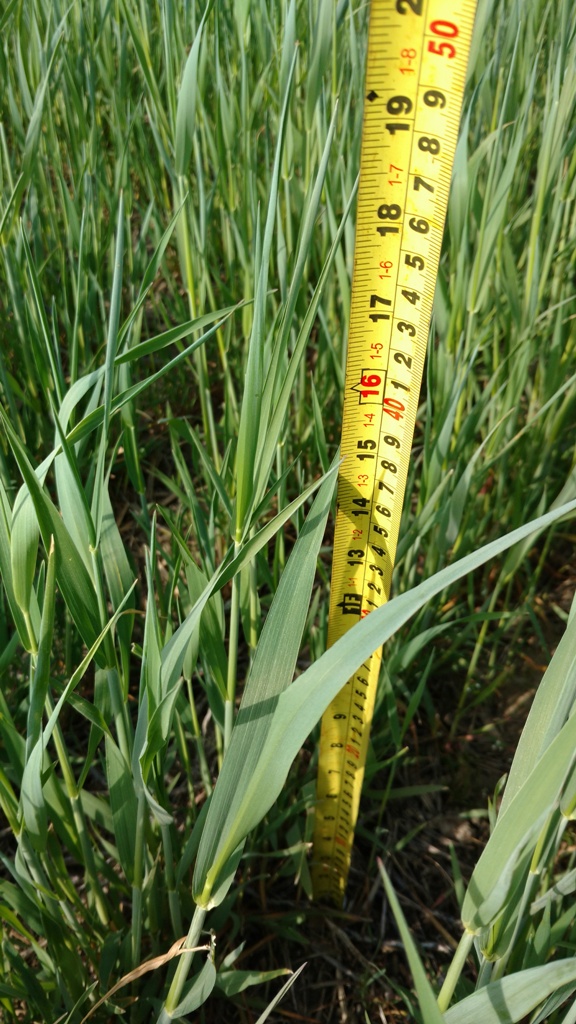by Jeremy Sweeten
What is Graze King 90?
Graze King 90 is a fall planted cereal grain that can be used as a forage in the following spring. Planting dates range from September to late November, depending on your latitude and growing conditions. Cereal rye is very adaptable because of its ability to be planted very late in the fall yet have outstanding winterhardiness.
Graze King 90 has been selected for improved forage yields and quality due to increased tillering and leafiness. Dry matter yields can range from 2 to 4 T/A plus. Graze King 90 can be grazed in the fall as long as 4” of leaf area is left on the plant. It can be mixed with oats and turnips/radishes for improved fall grazing.
Soil Health Benefits of Fall Planted Cereal Rye
Don’t forget to think about the soil health benefits of using cereal rye in the fall. It has a wonderful fibrous root system that is only out-performed by annual ryegrass. Cereal rye roots have been shown to reach over 40” in depth. It is a great scavenger of excess nitrogen (N) and other nutrients found in the soil profile. Consider adding a couple of pounds of Scav-N-ger Radishes to the cereal rye when it is being planted.
Fertilizing Graze King 90
Fertility management for Graze King 90 is very similar to wheat. It requires about 30 lb/A of nitrogen in the fall, whether it is from manure, legume nitrogen credits such as soybeans, or commercial fertilizer. In the spring, cereal rye performs optimally with 60-70 lb/A of N. This can be applied at the same time wheat is being topdressed. Excess nitrogen can cause lodging and nitrogen runoff.
Planting and Harvesting Times for Graze King 90
Graze King 90 works well after corn silage, soybeans, or a summer annual crop such as Sweet Six BMR sorghum sudangrass. In the fall it will remain vegetative. The overwintering process will promote vernalization and the cereal rye will begin its reproductive life cycle in the spring.
Harvest in the Midwest usually occurs in late April or early May. Optimal harvest is at the flag leaf stage. Once heading occurs, forage quality begins to drop, with crude protein (CP) decreasing and NDF and ADF increasing. Realize that the more growing degree days (GDD), the more rapidly cereal rye can mature.
Graze King 90 Mid March - Northern Indiana
If the temperature is in the 70's in late April, cereal rye can go from vegetative to headed out in only a few days. Pay attention as the crop matures to the weather and the plants. Cereal rye can be grazed, hayed, chopped, or wet wrapped.
The Field Above One Month Later
Most of the cereal rye is now 18” in height and responding well to the N fertilizer.
I took several plants and cut the stems open to look where the flower was located. It is about 10” up the stalk.
I estimate that the crop should be ready to harvest, in the early boot stage, in 10-14 days. This is assuming normal spring heat and moisture. Another observation was that the stems had two joints in them.
Harvest Time
This particular field was being harvested on May 5. Below are some pictures of what the field looked like.
Graze King 90 Planted into an Existing Alfalfa Stand
Below are some pictures from northern Indiana showing Graze King 90 cereal rye being used in an interesting, but very productive way. It had been no-tilled into an older stand of alfalfa.
The cereal rye was drill in the fall of 2015 and is now ready to be cut for forage. This situation probably works the best when the alfalfa stand is going to be rotated out to another crop such as corn or soybeans following the cereal rye harvest. The reason being is that the Graze King 90 matures more rapidly than the alfalfa by about 3 weeks. Cutting the alfalfa that early will cut into stand longevity.
The advantage of doing this is that the excess nitrogen (N) from the alfalfa will be used by the cereal rye and in turn the alfalfa will increase the crude protein content of the alfalfa/cereal rye mix. This is another tool for the toolbox when looking for more ways to produce high quality forage and keep your ground more productive.
















